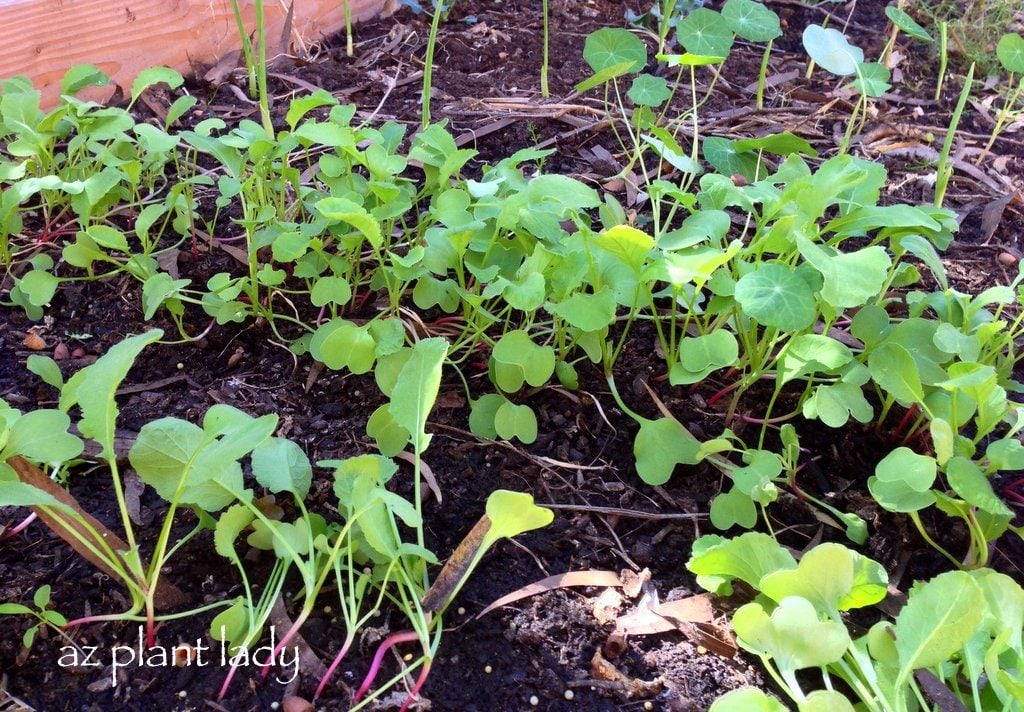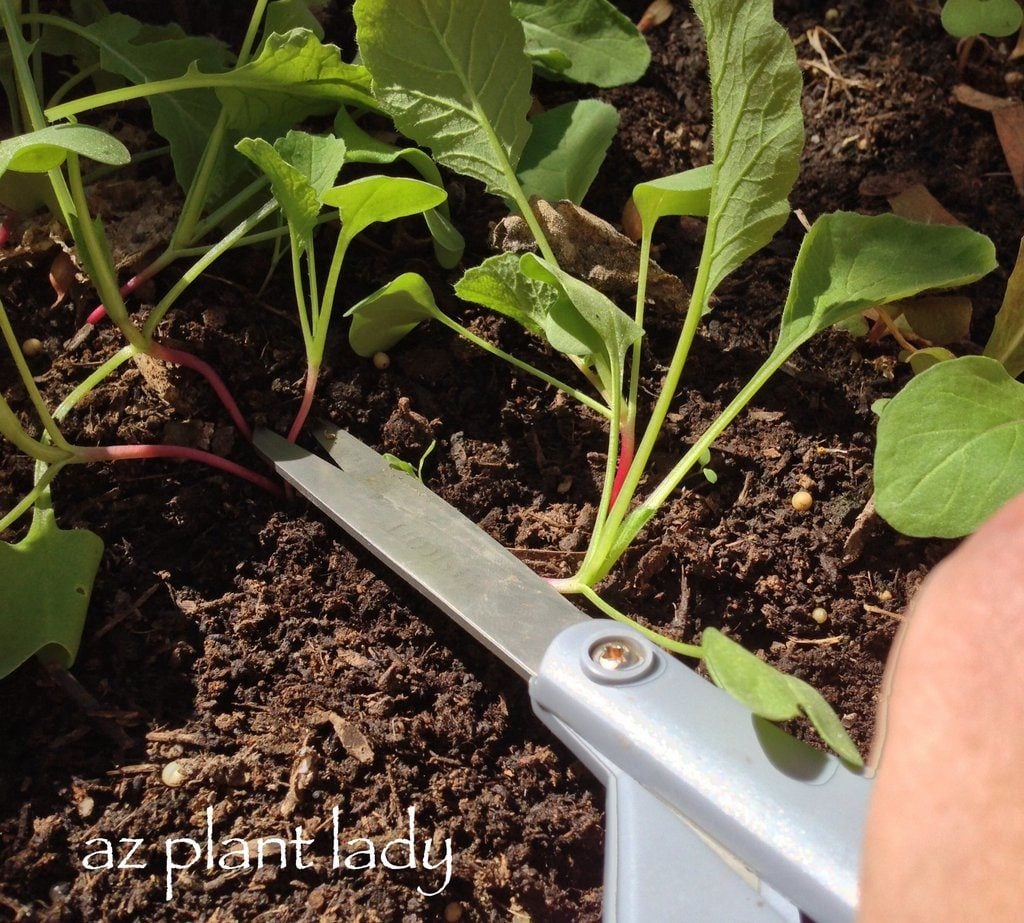How and When to Thin Vegetable Seedlings
Updated: Feb. 14, 2022
When you direct-sow seeds in your garden, things can get a bit overcrowded. Learn how to thin seedlings so your vegetable plants have space to grow.
Spring is a busy time in the vegetable garden. Before you get growing, you need to know how to thin seedings.

If you have already planted seeds, vegetable garden may be already full of small seedlings that are beginning to sprout and grow. You may notice that your seedlings may look a bit crowded like my young radish plants, above.
When you plant vegetables from seed, you often have to plant more seeds than you will actually grow to maturity because not all seeds will germinate. However, after the seeds begin to grow, you need to ‘thin’ them out.
Psst—here’s how and when to start seeds indoors.
How to Thin Seedlings
So what does thinning seedlings mean? Thinning is the practice of removing excess seedlings.
Why should you ‘thin’ your extra seedlings? Isn’t it better to let them grow so you will get more vegetables? No. The main reasons for thinning out excess vegetable seedlings are so that your vegetables have room to grow to their full size and they won’t need to compete for limited nutrients and water.
- You should pull out excess seedlings once they have grown two ‘true’ leaves. These aren’t the first leaves that appear—those are called ‘seed’ leaves. True leaves are shaped differently than the seed leaves.
- Read your seed packet for recommended spacing of vegetables seedlings to determine which seedlings to remove.
- You can pull out the excess seedlings carefully. But this method can disturb the roots of the remaining seedlings. Instead, I recommend using scissors and simply snipping off the tops of excess seedlings.
Check out these seed starter kits and supplies to jump-start your garden.

The roots will simply die once the top is removed.
Thinning vegetable seedlings is one of the simplest of gardening chores, but it is vital in order to grow healthy, full-sized vegetables. (You can also use this plant thinning method when growing flowers from seed.)



















